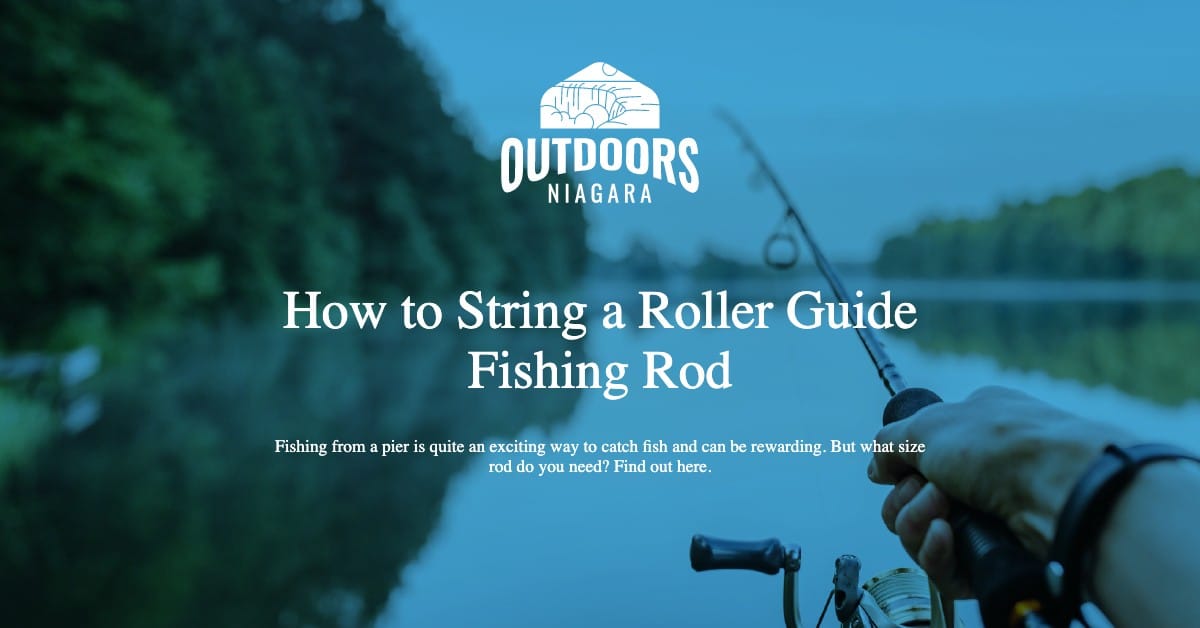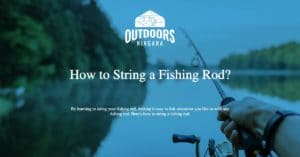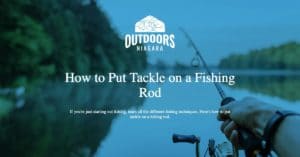Fishing is an interesting and inexpensive hobby enjoyed by people worldwide.
Once you have a good fishing rod, all you have to do is invest as much time in fishing as you can to hone your skills.
One of the reasons fishing is enjoyed by many people is because each fishing trip you make is unique.
Most times, you have no idea how the fishing trip will end; if you’ll have a big catch or not.
Fishermen who are beginners typically face two major problems: getting the right lure weight and stringing a fishing rod.
The lure you’re using affects your casting distance. Other factors that affect casting distance include lines, rod length, and wind.
Conversely, the problem of stringing a fishing rod is one that can be solved with constant practice.
Stringing a rod with roller guides involves a different process from the usual technique.
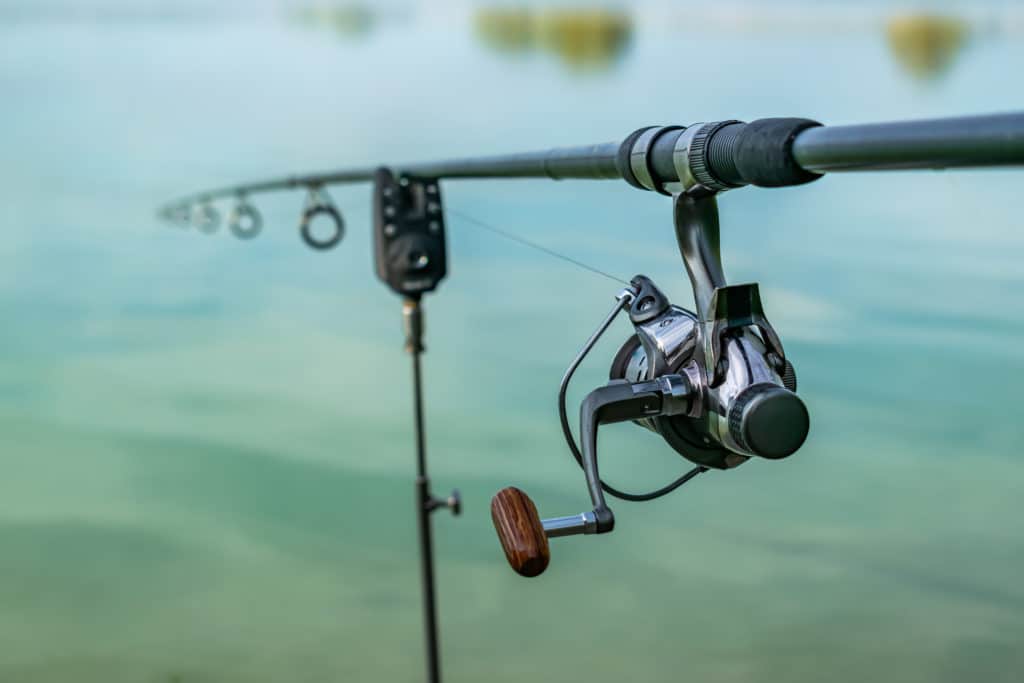
Contents
What are Roller Guides?
Knowing what roller guides are and what they are meant for is key to understanding how they affect the stringing process.
Roller guides are frames placed on top of a fishing pole.
Roller guide frames consist of small rollers that assist in guiding the line when big game fishing.
These bigger fish include tuna, wahoo, marlins, and sharks.
They also help eliminate the friction on the typical eye guide of a fishing rod.
Roller guides are usually found on trolling and high-end fishing rods.
They can also be found on some bait casting and spin casting fishing rods.
Roller guide frames are usually found on top of the fishing pole and are typically placed near the handle, in the front third of the pole.
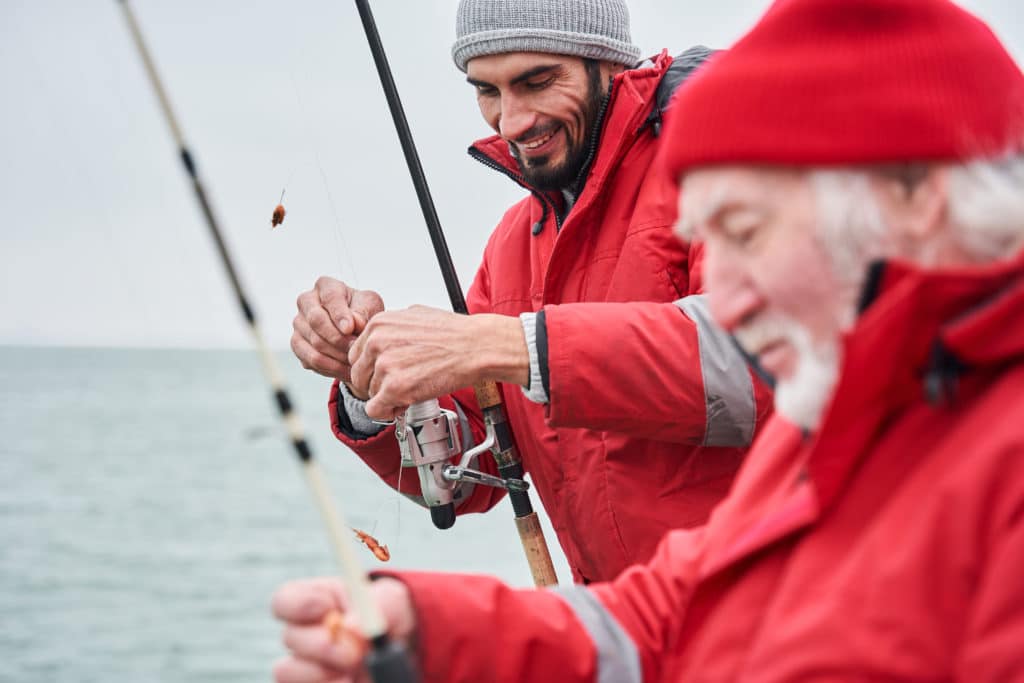
Importance of Guides
Decent guides have specific functions on a fishing rod which makes them so important.
- Keep the line away from the rod.
- Provide a smooth surface over which the line passes.
- Direct the line to the target.
- Contribute to the casting distance and rod sensitivity.
Why You Should Use Roller Guides
Using conventional guides while going after bigger fish may create problems. Bigger fish means an increase in friction, which can damage the fishing line.
Also, the pressure of the rod blank and fishing line on conventional guides can result in weak points that are unable to handle the stress.
Roller guides allow you to fish more successfully because the chances of your line snapping under great stress are less.
Stringing a Fishing Rod with Roller Guides
The restringing process of roller guides shouldn’t pose a challenge.
Changing the line on a pole with a roller guide is almost the same as the traditional line replacement.
The only difference is that you would have to guide the line through the eyes on top and the roller guide.
To string your roller-guided fishing pole, you will need your fishing pole, a fishing line, and lubricant.
Follow the steps below to restring your roller-guided fishing pole.
- Get the right fishing line. Many people get confused about whether they should get mono or braided lines. They both have pros and cons, but most roller-guided fishing poles will require a heavy braided line. New fishing rods usually come with a recommended line that will work best with your pole. Most of the new poles come with a braided fishing line recommendation.
- Remove the old line. Clean the barrel, reel, roller guide, and eyes of any residue of the old line. Check again to see if any broken-off pieces are lodged in any part of the fishing rod.
- Using the same technique as threading a needle, thread the new fishing line through the eyes and roller guide. Carefully guide the end of the line through the eyes located along the top of the fishing pole. Be sure to pass the line through the roller guide sitting between the eyes.
The line should be guided through the eye hole of the roller guide located at the bottom of both the front and back of its convex frame. You should not wound the line around the roller guide; the line should instead sit in the indention between the roller guide frame.
- Check if the line is guided through correctly. If it is, you can proceed to tie the line with the reel, knotting it properly. Ensure your line is not twisted. A twisted line will bunch up and fold and can eventually damage the pole while rendering the line useless. You can keep the line straight by twisting the spool frequently. This also relieves the tension.
- With the reel connected to the fishing line, roll the line onto the barrel. Crank the handle 16 to 24 full rotations. Watch the reel carefully while cranking because the length of line a fishing pole can hold varies. There should be a small space between the lip of the reel and the top of the line wheel.
- Lubricate your roller. You can use lubrication on the roller inside your roller guide frame if it starts sticking or squeaking.
Final Thoughts
Roller guides have a number of benefits, including reducing the wear on your fishing line.
They are great for fish fighting since they significantly reduce line friction.
Some anglers consider them difficult to maintain, but this isn’t so.
The only maintenance they need is you lubricating them once in a while.
Although some people consider the process of restringing a roller-guided fishing pole a hard one, it isn’t.
However, it is essential to follow the steps listed in this article carefully.
You may follow the steps to the letter but not achieve the desired result because you’re using the wrong fishing line.
Using the right fishing line weight is crucial.
Double-check to ensure your line passes through the eyes and the roller guide.
Keep your line straight during the stringing process, as a twisted line may cost you your pole.
Remember to relieve the tension by twisting your spool frequently.
Restringing your roller-guided fishing rod can be a smooth process if you wish it to be.
Just follow the steps. Happy fishing!

